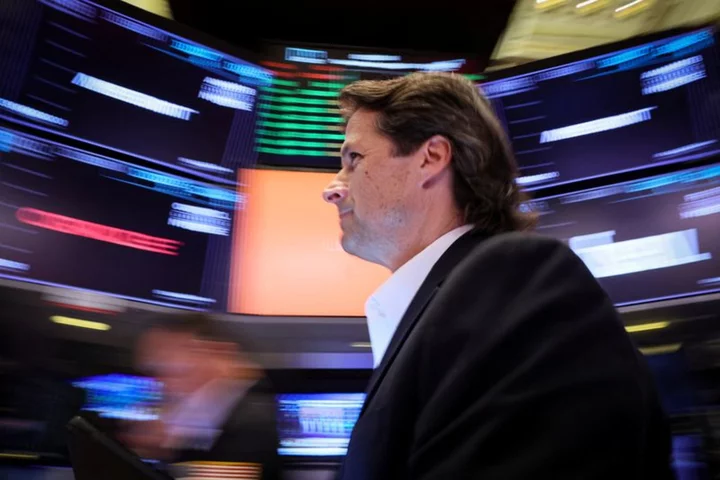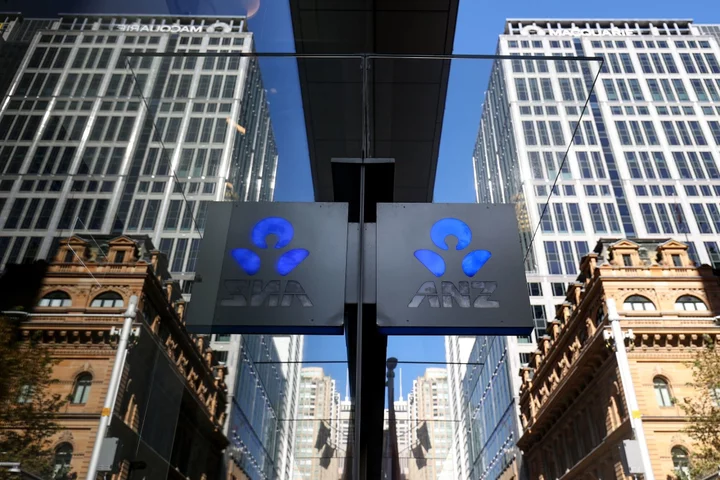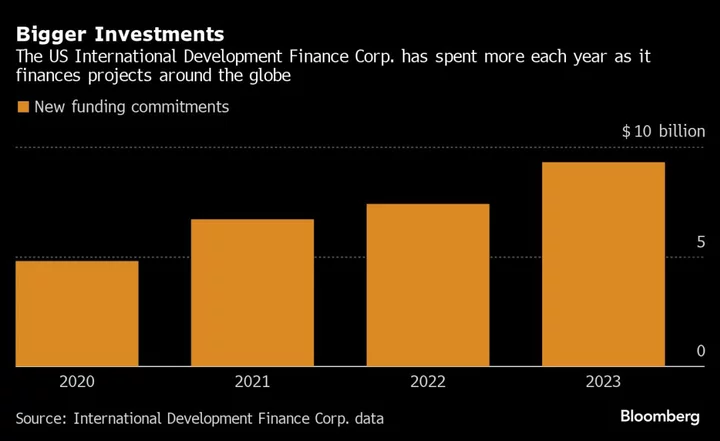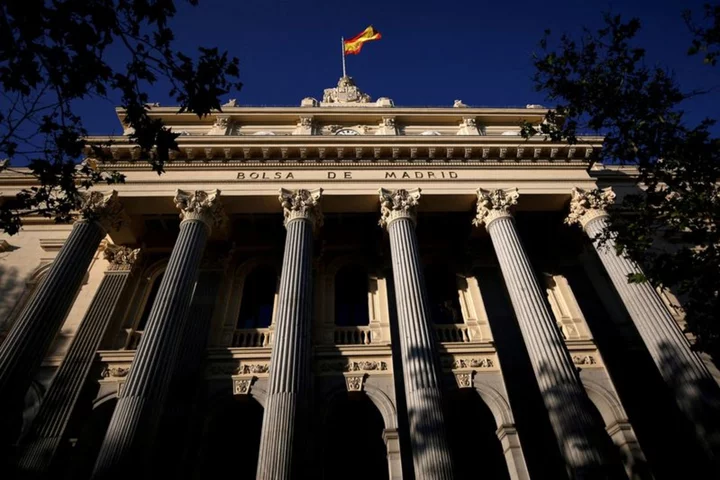The $7.4 trillion ETF world is wrestling with a unique strain of concentration risk: some of the biggest issuers are reliant on a single product for the bulk of their success.
At least 28 firms — that run eight funds or more — have a minimum of 40% of their entire asset base in a single product, according to data compiled by Bloomberg Intelligence. Heavyweights including Invesco Ltd., ARK Investment Management and Pacific Investment Management Co. are among the managers with the most concentrated lineups.
The number is even higher when taking into account companies that have just a handful of products, which in the ETF space isn’t uncommon as funds can sometimes catch fire during historic market events or thanks to big marketing campaigns.
A single product can power growth on an upswing. Take, for instance, ARK Investment Management’s star innovation ETF that catapulted Cathie Wood to the top active-manager slot in 2021 following a tech runup. But the reliance on one fund potentially leaves issuers vulnerable to losing share when the market turns against it, which happened with ARK.
“It’s about being able to weather different storms,” said BI’s Athanasios Psarofagis. “You’re really dependent on one product, and if, for whatever reason, that product is in a model and everyone is flocking into it, and all of a sudden that trade flips, do you have something else to counter that weight?”
The issue also touches on an important trend within the industry: the whittling down of bloated lineups. So far this year, 156 funds have shuttered, on pace for the most since 2020, data compiled by Bloomberg show. Even well-diversified issuers are pruning their lineups: BlackRock Inc. last week announced plans to close five funds.
Examples of super-high concentration abound among industry nobility.
Nearly 50% of Invesco’s ETF assets under management lie with its Invesco QQQ Trust Series 1 fund, or QQQ, a $194 billion fund tracking the Nasdaq 100.
“Invesco has a robust suite of over 200 ETFs in the US, covering a wide array of strategies designed for many different market and economic environments,” said Anna Paglia, global head of Invesco ETFs and Indexed Strategies. “In fact, year-to-date, along with QQQ and QQQM, the ETFs that are gathering the largest inflows are factor strategies like OMFL, SPHQ and SPGP, diversification plays like RSP, as well as intelligent income strategies like BSCP.”
Another example is Pacer ETFs, which runs more than 40 funds. It has roughly 55% of its assets under management with the $14 billion Pacer US Cash Cows 100 ETF (COWZ). The company didn’t return a request for comment.
But the trend is even more prevalent among smaller firms.
Perhaps the poster child is the ARK Innovation ETF (ticker ARKK), which is carrying 52% of the firm’s entire asset base. The fund at its height in 2021 had more than $28 billion in assets, a number that’s been reduced to around $7 billion. The drawdown occurred as investors soured on growth stocks while the Federal Reserve raised interest rates. ARK didn’t return a request for comment.
Concentration risk is less of a problem for larger companies, which can oftentimes have dozens or hundreds of funds under their remit, said Ben Johnson, head of client solutions at Morningstar Inc.
But it becomes more troublesome for smaller companies that are pinning most or all of their hopes on one product. Concentration risk can make it more difficult for them to cinch placements on larger wealth platforms that can lead to more business and flows. Such platforms might even be scrutinizing the “viability” of an issuer, if the single-fund accumulation risk is too high.
“They’re going to be worried — they’re going to raise their eyebrows if they think there’s a risk that you’re going to be a one-trick pony,” Johnson said.
On the other end of the spectrum, giants BlackRock and Vanguard Group, the two largest ETF issuers, boast some of the best-diversified lineups. The $343 billion iShares Core S&P 500 ETF (IVV) and the $326 billion Vanguard S&P 500 ETF (VOO) account for roughly 15% of their respective lineups, data compiled by BI show.
For management, there are multiple considerations, including that issuers sometimes need to keep ETF assets above a certain threshold to make running the fund feasible, said Jillian DelSignore, managing director and head of strategic growth and solutions at FLX Networks. In addition, the firms can suffer a hit to revenue if the tides turn against an asset class and a fund starts to see outflows.
“It’s a risk for any asset manager that has high concentration in one product,” she said. “If issuers are being honest with themselves, they’re worried about concentration.”









